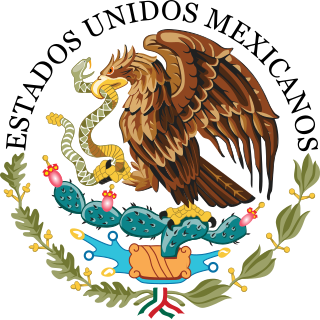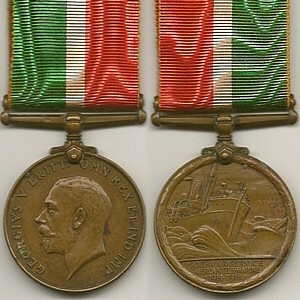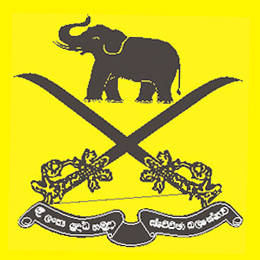
The Legion of Merit (LOM) is a military award of the United States Armed Forces that is given for exceptionally meritorious conduct in the performance of outstanding services and achievements. The decoration is issued to members of the eight uniformed services of the United States as well as to military and political figures of foreign governments.

The Statue of Freedom, also known as Armed Freedom or simply Freedom, is a bronze statue designed by Thomas Crawford (1814–1857) that, since 1863, has crowned the dome of the U.S. Capitol building in Washington, D.C. Originally named Freedom Triumphant in War and Peace, a U.S. government publication now states that the statue "is officially known as the Statue of Freedom." The statue depicts a female figure bearing a military helmet and holding a sheathed sword in her right hand and a laurel wreath and shield in her left.
An aviator badge is an insignia used in most of the world's militaries to designate those who have received training and qualification in military aviation. Also known as a Pilot's Badge, or Pilot Wings, the Aviator Badge was first conceived to recognize the training that military aviators receive, as well as provide a means to outwardly differentiate between military pilots and the “foot soldiers” of the regular ground forces.
The Ceylon Defence Force (CDF) was established in 1910 by the Ceylonese legislation Ceylon Defence Force Ordinance, which reformed the Ceylon Volunteer Force (CVF) that existed previously as the military reserve in the British Crown colony of Ceylon. At the time of forming it was only a reserve force but soon developed into a regular force responsible for the defence of Ceylon. The CDF was under the command of the General Officer Commanding, Ceylon of the British Army in Ceylon if mobilised. However mobilisation could be carried out only under orders from the Governor.
The Marine Corps Expeditionary Medal is a military award of the United States Marine Corps. It was established on 8 May 1919 as the Marine Corps Expeditionary Ribbon. A full-sized medal was authorized on 1 March 1921. The Marine Corps Expeditionary Medal is therefore one of the oldest medals of the United States military which is still issued to active duty personnel.

The British War Medal is a campaign medal of the United Kingdom which was awarded to officers and men of British and Imperial forces for service in the First World War. Two versions of the medal were produced. About 6.5 million were struck in silver and 110,000 in bronze, the latter awarded to, among others, the Chinese, Maltese and Indian Labour Corps.

This is a list of military decorations awarded by the United Mexican States as part of the Mexican Honours System.

The Mercantile Marine War Medal was established in 1919 and awarded by the Board of Trade of the United Kingdom to mariners of the British Mercantile Marine for service at sea during the First World War.

The Victory Medal is a United Kingdom and British Empire First World War campaign medal.

The Sri Lanka Army Volunteer Force (SLAVF) is the active-duty volunteer reserve force of the Sri Lanka Army. The SLAVF is separate from the Regular Force which consists of personal who are professional soldiers and its Regular Reserve, which comprises personal who have a mobilization obligation following their service in the regular army. The SLAVF consists of the volunteer force and the volunteer reserve; administration and recruitment of reserve personal is carried out by the Volunteer Force Headquarters in Shalawa, Kosgama which is headed by the Commandant of the Volunteer Force. It has a current strength of about 55,000 personnel. The SLAVF was known as the Ceylon Volunteer Force from 1949 to 1972 and the Sri Lanka Volunteer Force from 1972 to 1985.
The Ceylon Planters Rifle Corps was a regiment of the Ceylon Defence Force, which existed between 1900 and 1949. It was a volunteer (reserve) regiment based in Kandy, made up of only Europeans that were tea and rubber planters of the hills of Sri Lanka. The regiment deployed personnel to fight in the Second Boer War, the First, and Second World Wars.
Lieutenant Basil John Blackett was a British World War I flying ace credited with five aerial victories as an observer and rear gunner while serving in the Australian Imperial Force, seconded to the Royal Flying Corps. In late 1918 he resigned his Australian commission to join the Royal Air Force.
Major Walter Culpepper Stanser Ingles, VD, FRGS was a British surveyor. He was the 14th Surveyor General of Ceylon and an official member of the Legislative Council of Ceylon.
Captain Willoughby Greaves Beauchamp CBE, VRD was a British merchant. He served as the Commanding Officer of the Ceylon Royal Naval Volunteer Force from its formation in 1938 to 1946.

The Victory Medal (South Africa) is the Union of South Africa's version of the Victory Medal (United Kingdom), a First World War campaign medal of Britain and her colonies and dominions. The medal, never awarded singly, was awarded to all those South Africans who were awarded the 1914–15 Star or the British War Medal.

The Medal for the Best Shot in the British Army, Infantry, was instituted by Queen Victoria in 1869 and was awarded annually from 1870 to 1882 to the best shot of the Infantry of the British Army, including the Royal Engineers and the Colonial Corps.

The Colonial Special Constabulary Medal was established on 1 April 1957 as a volunteer and part-time long service medal of the United Kingdom and the Commonwealth. On 10 April 2012 the medal became known as the Overseas Territories Special Constabulary Medal, and underwent a minor change in design. This reflected the change in the way Britain's remaining colonies were described, they being classed as 'Overseas Territories' from 2002.
Major John William Oldfield, was a prominent figure in the commercial and public life in Ceylon, serving as the chairman of the Ceylon Planters' Association between 1924 and 1925, an appointed member of the State Council of Ceylon in 1931 and as an appointed member of the first Parliament of Ceylon in 1947.

A statue of Captain Albert Ball stands in Nottingham Castle Gardens, in Nottingham, England. It comprises a bronze sculpture by Henry Poole which depicts the British fighter pilot Captain Albert Ball VC DSO & Two Bars, MC accompanied by an allegorical female figure, standing on a stone pedestal by the architect Edwin Alfred Rickards. The memorial was unveiled in 1921, was listed at Grade II in 1972, upgraded to Grade I in 2017.
The Navy Civilian Service Commendation Medal is awarded to Department of the Navy and U.S. Marine Corps civilians who distinguish themselves by performing well above that which is usually expected of an individual commensurate with his or her grade or specialty, and above the degree of excellence which can be appropriately reflected in the individual's performance evaluations, or personnel records. The medal may be awarded after a significant achievement or after an extended period of time. Recipients are recognized at the equivalent level of the Navy and Marine Corps Commendation Medal awarded to military personnel for similar achievement.












